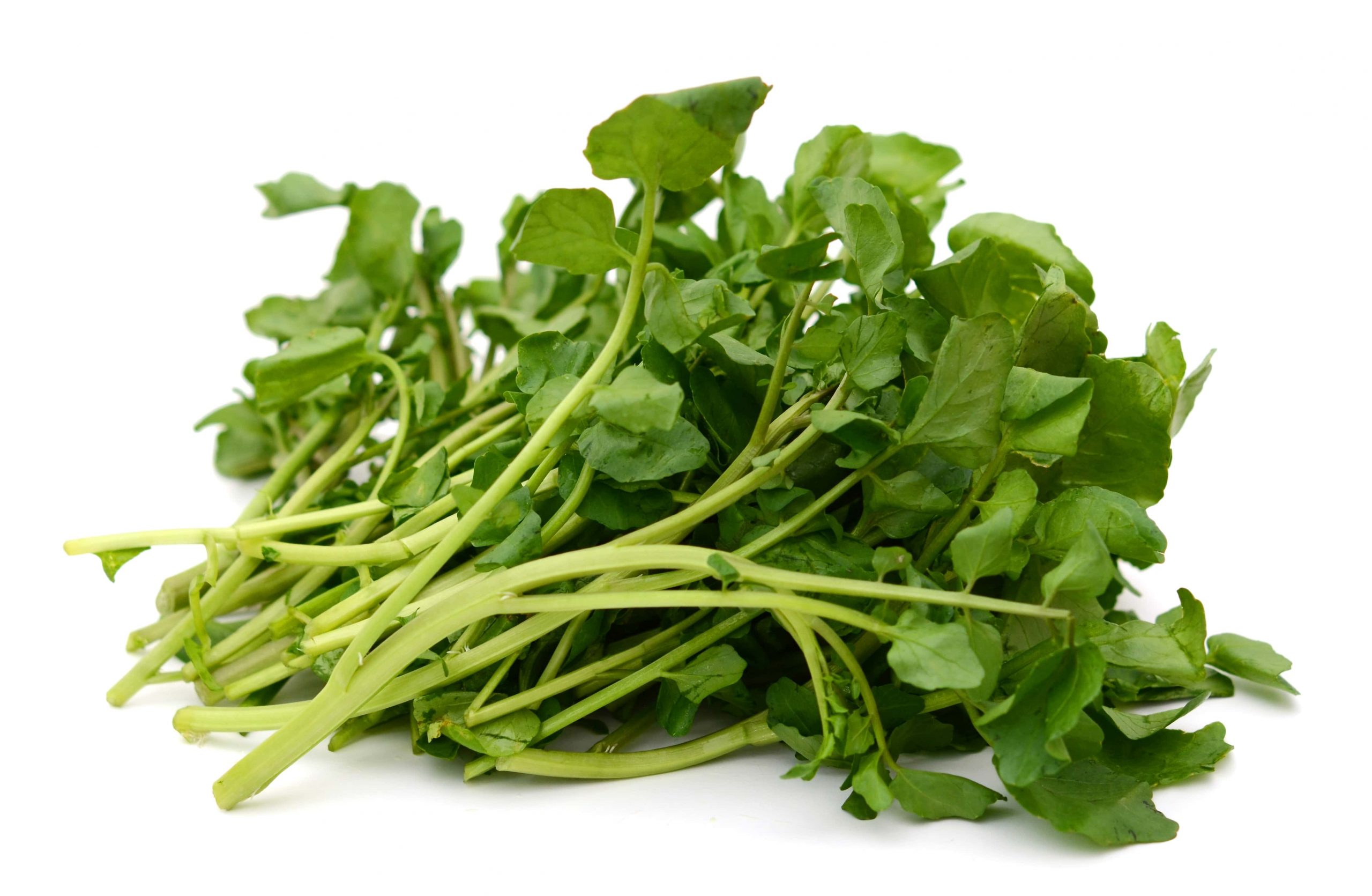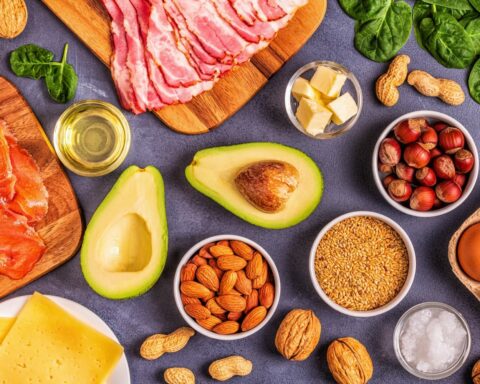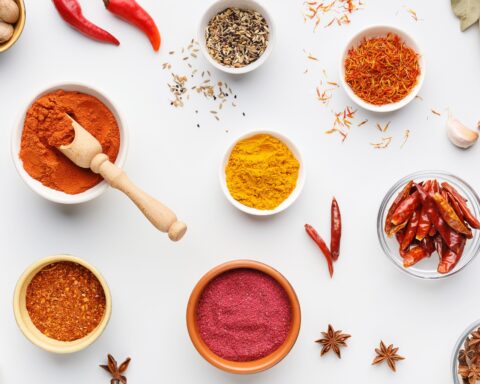Watercress is popularized worldwide and is grown in many water beds, thanks to its impressive health benefits. It promotes eye and heart health, may aid weight loss, is packed with nutrients and antioxidants, may help lower the risk of osteoporosis, and is versatile, providing several ways to add it to recipes.
Watercress was treated as a weed for a long time until the 1800s, when it was first cultivated in the UK. Since then, it has been popularized worldwide, thanks to its many health benefits. It is packed with antioxidants such as glucosinolates, lutein, zeaxanthin, and beta carotenes, all of which promote health. Besides, it is low in calories, making it ideal for those trying to lose weight. As if that’s not enough, watercress is fairly laden with minerals such as magnesium, potassium, phosphorus, and vitamins such as vitamin K that promote blood clotting and bone health. Here are the impressive health benefits of watercress that will move you to eat this leafy green vegetable or add it to your recipes.
i. It is versatile
We all appreciate versatile foods since they easily fit in our recipes. Watercress is one such versatile food that you can play around with and add to various dishes. First, you can eat it raw or lightly steam it to benefit best from its health-promoting compounds. Secondly, you can sprinkle it into your salads. Third, you can use it as a top to any dish that you think about, and it will blend well with it. Yet, there are many other ways of incorporating this veggie, including stirring it and adding it to your soup near the end of cooking, serving it with egg, or substituting it for lettuce when preparing a sandwich.
ii. It has a rich nutritional profile
Nutritionists and dietitians largely rely on the nutritional profile of foods to determine their contribution to health. Exploring the nutritional profile of watercress, you will agree that it is such a superfood. A cupful (34 g) of watercress is packed with 0.8 g protein, 0.4 g carbs, 0.2 g fiber, 0 g fats, and several minerals, including 4% RDI of magnesium and calcium. As if that’s not enough, the same cup has vitamins, including K (106% RDI), A (22% RDI%, and C (24% RDI). Yet, all these come with only 4 calories.
iii. It may aid in weight loss
Although watercress has not been studied for weight loss, there is every reason to believe that you can never go wrong with it when trying to shake off extra pounds. This is because it has fewer calories than other vegetables yet packs the same amount or more nutrients. Besides, it has trace amounts of fibers (0.2 g per 34g cup), further aiding weight loss by promoting fullness.
iv. It is packed with powerful antioxidants
Antioxidants are compounds from plants and plant-based foods such as vegetables and fruits and are useful for neutralizing free radicals. The latter are unstable molecules that, when left to accumulate in the cells, can result in oxidative stress, increasing the risk of several health conditions such as cancer, heart disease, and diabetes. Thankfully, research has shown that watercress has several antioxidants, including glucosinolates. Glucosinolates get oxidized to isothiocyanates when watercress is cut, and the latter renders many health benefits to the body, including reducing cancer risk.
v. It may lower the risk of osteoporosis and osteoarthritis
Osteoporosis and osteoarthritis are two conditions affecting the bones and worsen with mineral depletion. Thankfully, studies have shown that you can reduce your risk of suffering from these conditions by taking raw watercress or incorporating this vegetable in your recipe. It has trace amounts of magnesium, calcium, phosphorus, and potassium, the top minerals that promote bone health. As if that’s not enough, watercress is heavily laden with vitamin K, which forms protein osteocalcin, the primary protein in the bones. Besides, the same protein whose abundance vitamin K increases promotes bone tissue turnover, further boosting their health.
vi. It may promote eye health
You need to take more watercress or feature it more frequently in your recipes if you want to promote your eye health and lower the risk of visual complications. This leafy green vegetable is packed with zeaxanthin and lutein, two antioxidants that effectively reduce the risk of age-related macular degeneration. As if that’s not enough, the same vegetable is packed with beta-carotene and vitamin A, also needed for healthy eyes.
vii. It may lower the risk of certain cancers
Cancer, diabetes, heart disease, and heart failure top the list of complications that compromise life quality and cause many deaths. Thankfully, several foods, including watercress, may help lower the risk of cancers. Glucosinolates, one of the antioxidants in watercress, are activated into isothiocyanates by cutting or chewing watercress. Studies show that the latter helps lower the risk of several cancers, including breast, lung, prostate, skin, and liver cancers.
viii. It may turbo-shoot the immune system
The immune system is the body’s defense system, and anything that affects it compromises overall health. Thankfully, you can eat several foods to boost the body’s defense mechanism, lowering the risk of infections. Watercress has vitamin C, and taking a cupful (34 g) of this vegetable helps meet 17% or 20% RDI of women’s and men’s vitamin C needs, respectively. Vitamin C is one of the powerful antioxidants that safeguard and boost the immune system.
ix. It is good for heart health
Eating foods rich in minerals, vitamins, and compounds that promote heart health is important in keeping cardiovascular diseases at bay. You can include watercress in your diet more often to supply the heart with its health-promoting compounds. Watercress is rich in powerful antioxidants, including lutein, flavonoids, zeaxanthins, and isothiocyanin from the activation of glucosinolates. All these add on to heart health. Besides, it is rich in nitrate ions that increase the blood vessels’ nitric oxide levels, making them more flexible and readier to vasodilate or vasoconstrict.
x. It may be good for athletic performance
Athletes and workout enthusiasts now eat more watercress and other vegetables in the Brassicaceae family to boost their performance. As mentioned previously, watercress is rich in nitrates, making it good for the heart and blood vessels. One performs well with the heart condition in good shape and blood vessels that readily vasoconstrict or vasodilate.
Conclusion
Watercress is a leafy green vegetable belonging to the same class as cabbage, Brussel sprouts, and other brassicaceous vegetables. It has been popularized worldwide, and for every good reason. It is rich in antioxidants, minerals, and vitamins, loading it with impressive health benefits. Peer into this article to see in detail all the health perks you can reap by taking watercress.
- Our Big Kitchen’ (OBK) is a non-profit organization located in Sydney, Australia - April 10, 2023
- Duos CBD, a hemp product E-commerce website - April 10, 2023
- SOFA SPOONING SEX POSITION - April 7, 2023









